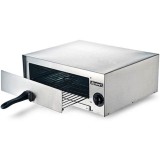How Do You Reset Smoke Alarm After Replacing Battery?
Smoke alarms are essential safety devices that provide early warning in case of a fire. Their purpose is to alert occupants and give them time to react and evacuate. However, after replacing the battery in a smoke alarm, it's crucial to reset it to ensure it functions properly and provides reliable protection.
Why Resetting Is Necessary
Resetting a smoke alarm after battery replacement is essential for several reasons:
- Ensures Proper Functionality: Resetting the alarm ensures that it is properly synchronized with the newly installed battery, allowing it to communicate effectively with the alarm's circuitry.
- Prevents False Alarms: Reseting the alarm helps prevent false alarms caused by temporary power fluctuations or disruptions during battery replacement. Resetting the alarm ensures that it is in the correct operational mode and reduces the likelihood of nuisance alarms.
- Maximizes Alarm Sensitivity: Resetting the alarm ensures that the alarm's sensitivity is calibrated to the appropriate level. This means it will be able to detect smoke and fire particles effectively and trigger the alarm promptly.
Step-by-Step Guide to Resetting a Smoke Alarm
Resetting a smoke alarm is typically a simple and straightforward process that can be completed in just a few steps:
- Replace the Battery: If you have not already done so, first replace the old or depleted battery with a fresh one of the correct type and size specified in the alarm's manual.
- Locate the Reset Button: Depending on the model and design of your smoke alarm, the reset button may be located on the back, side, or top of the device. Consult the alarm's manual for the exact location of the reset button.
- Press and Hold the Reset Button: Once you have found the reset button, press and hold it for the specified amount of time indicated in the alarm's manual. Typically, this is around 10 to 20 seconds.
- Release the Button and Test the Alarm: After the specified time has elapsed, release the reset button. The alarm will usually emit a short beep or chirp to indicate that it has been successfully reset. To ensure that the alarm is functioning correctly, press the test button on the device, which typically triggers a loud alarm sound.
Additional Tips for Resetting Smoke Alarms
- Follow the Manufacturer's Instructions: Always refer to the specific manufacturer's instructions for your smoke alarm model to ensure proper resetting procedures. Different brands and models may have slightly different reset methods or button locations.
- Test the Alarm Regularly: It's important to test your smoke alarm regularly, both after battery replacement and periodically throughout the year. This ensures that the alarm is functioning properly and is ready to alert you in case of a fire.
- Replace Alarms Every 10 Years: Smoke alarms have a limited lifespan, typically around 10 years from the date of manufacture. Even if the alarm is functioning properly, it's recommended to replace it every 10 years to ensure optimal performance and reliability.
By following these steps and tips, you can ensure that your smoke alarms are properly reset after battery replacement, enhancing your home's safety and providing peace of mind.

How To Reset Smoke Detector Make It Stop Beeping Chirping Randomly For No Reason

How To Easily Stop Smoke Detector Beeping Or Chirping Inspired Housewife

How Do You Reset The Smoke Alarm After

What To Do When Smoke Alarm Keeps Beeping

How To Reset And Replace Smoke Detector Batteries

How To Factory Reset Your Fire Alarm Smoke Detector
How To Make A Hard Wired Smoke Detector Stop Chirping Without Replacing The Battery Immediately Quora

What To Do When Smoke Alarm Keeps Beeping

Smoke Alarm Beeping Explained Tips To Change Battery

How To Stop A Smoke Alarm From Chirping Beeping Security Org








